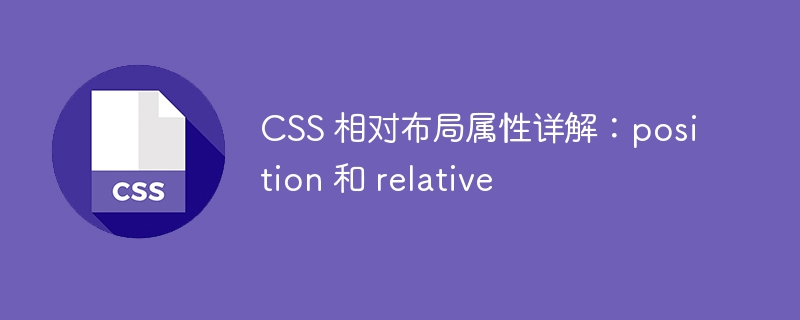

Detailed explanation of CSS relative layout properties: position and relative
In front-end development, layout is often a problem that developers need to face. In order to better control the placement of elements Position in the page, CSS provides a variety of layout methods. Among them, relative layout is a very common layout method. By using the position and relative attributes, we can flexibly adjust the position and size of elements.
The position attribute is used to define the positioning method of the element. Common values are relative, absolute, fixed and static. The relative value is a special value of the position attribute, which allows the element to be layout adjusted relative to its normal position.
When using the relative attribute, the element will still be laid out according to the normal document flow, but after the layout is completed, it will be slightly adjusted relative to its normal position. Here is an example that shows how to use the relative attribute to make layout adjustments to elements:
In the above example, we created a container with a width of 400px, a height of 200px, and a background color of #f2f2f2. The container contains another box with a width of 100px, a height of 100px, and a background color of #ffcccc. By adding position: relative and the top and left properties to the box, we offset the box 20px to the lower right relative to its normal position.
It should be noted that layout adjustments using the relative attribute will not affect the layout position of other elements. This is because relative layout does not change the position of elements in the document flow.
The advantage of using relative layout is that it can achieve fine-tuning and precise positioning. For example, when we need to place multiple elements inside a container and want them to be laid out in a specific order, we can achieve precise position adjustment by setting the top and left values of different elements. This is especially important when developing responsive pages because we can set different layout positions according to different screen sizes to adapt the page to different devices.
We can also use relative units to set the position of relative layout. For example, by setting the element's top: 50% and left: 50%, combined with the translate() function of the transform property, you can center the element relative to the center of the container.
To summarize, using the position: relative attribute to implement relative layout can achieve fine-tuning and precise positioning of elements on the page. By setting attributes such as top and left, we can flexibly adjust the position of elements. At the same time, relative layout will not affect the layout of other elements, keeping the page structure stable. In actual development, rational use of relative layout attributes can better control the position and size of elements and improve user experience.
The above is the detailed content of Detailed explanation of CSS relative layout properties: position and relative. For more information, please follow other related articles on the PHP Chinese website!